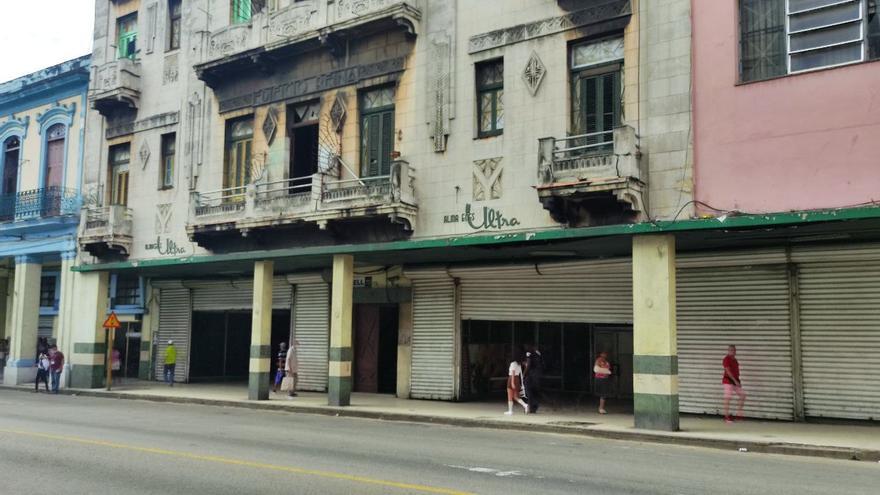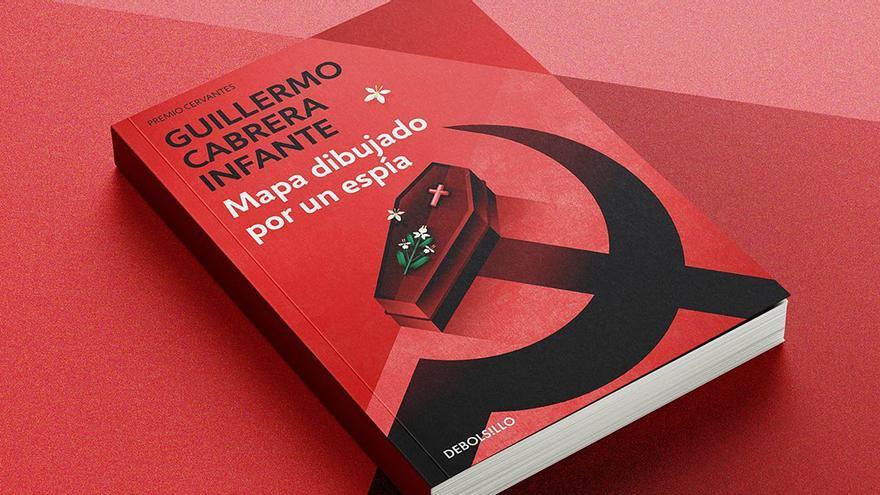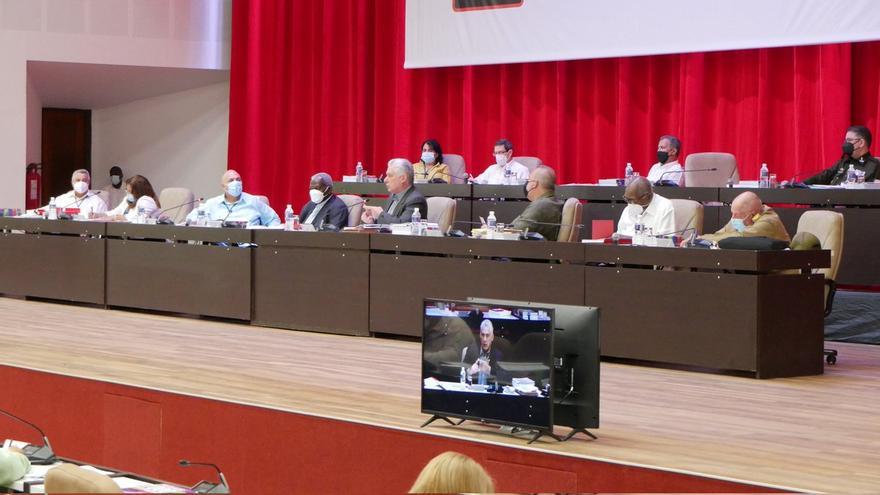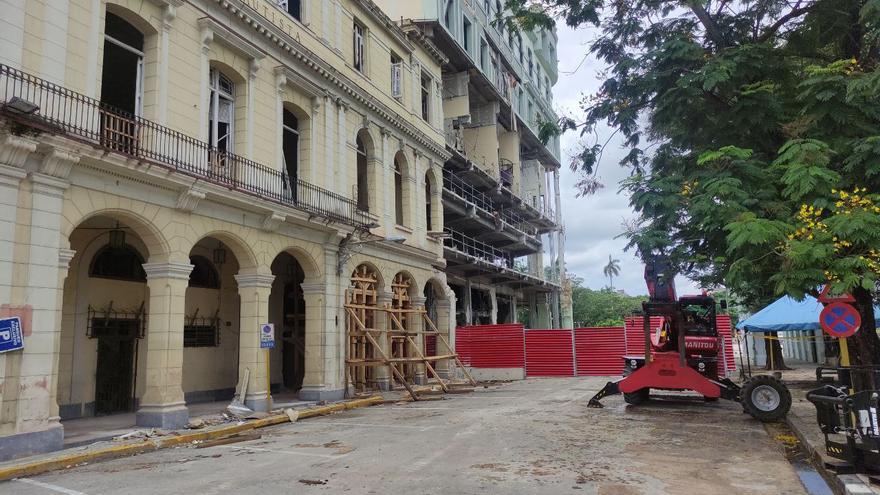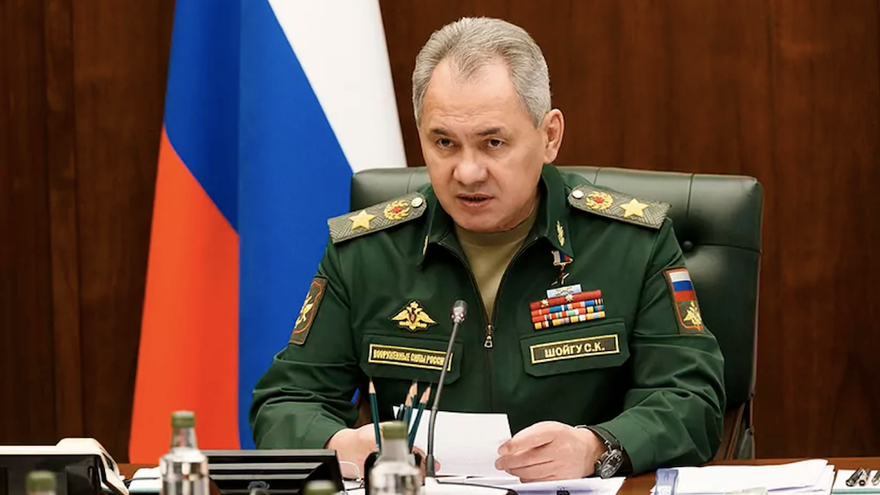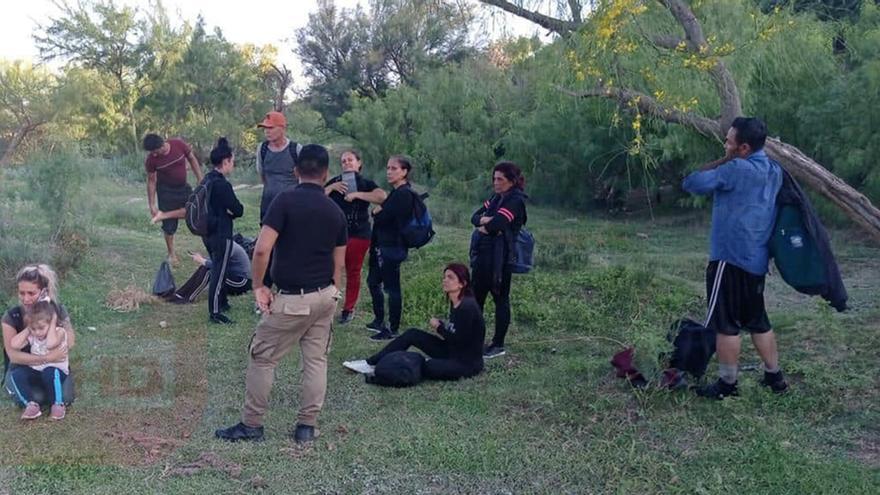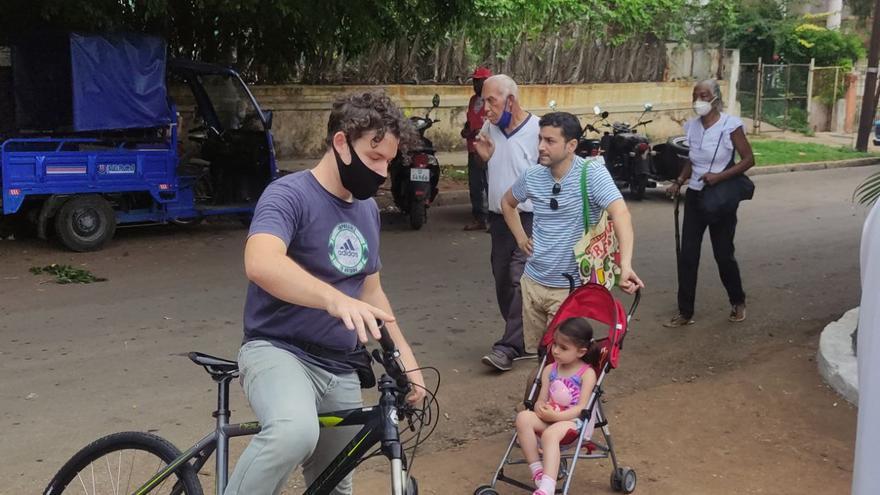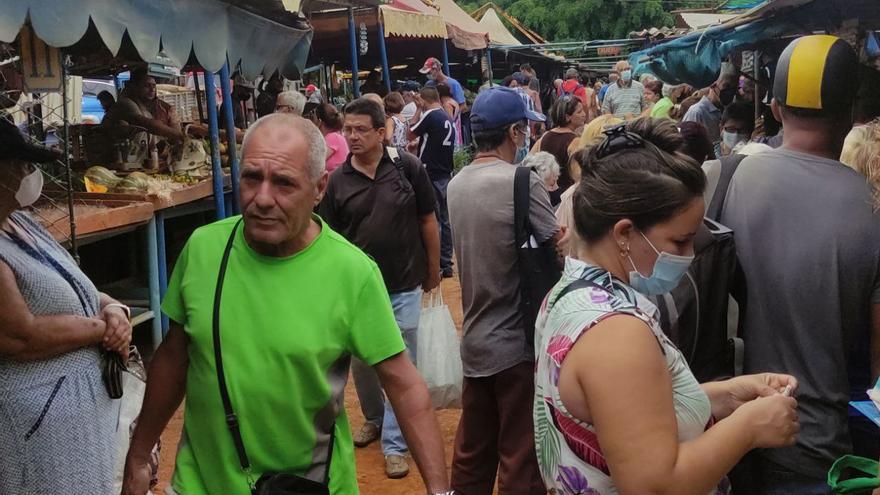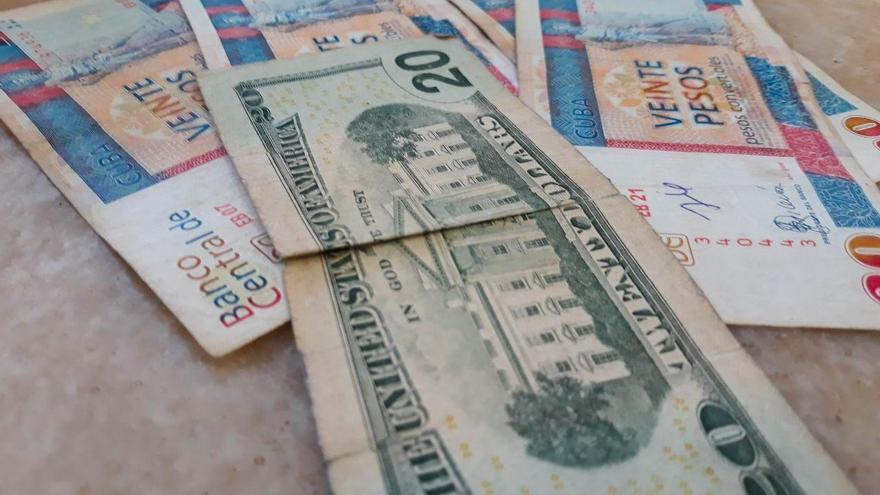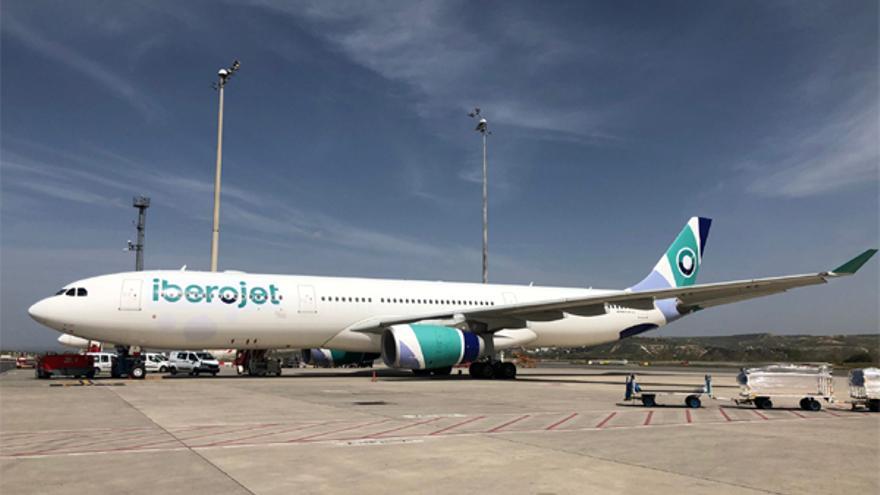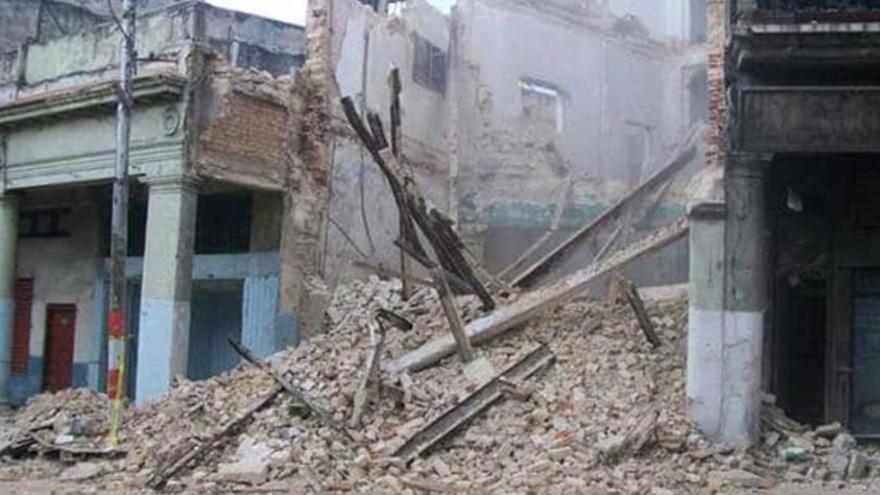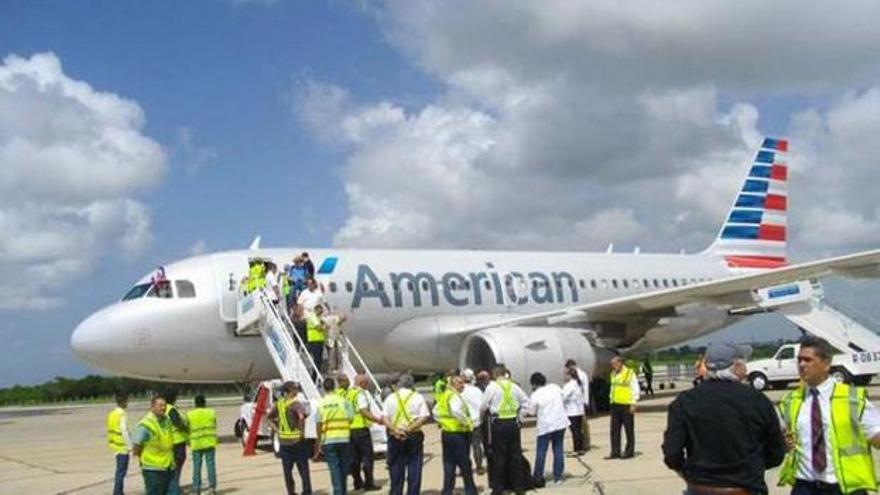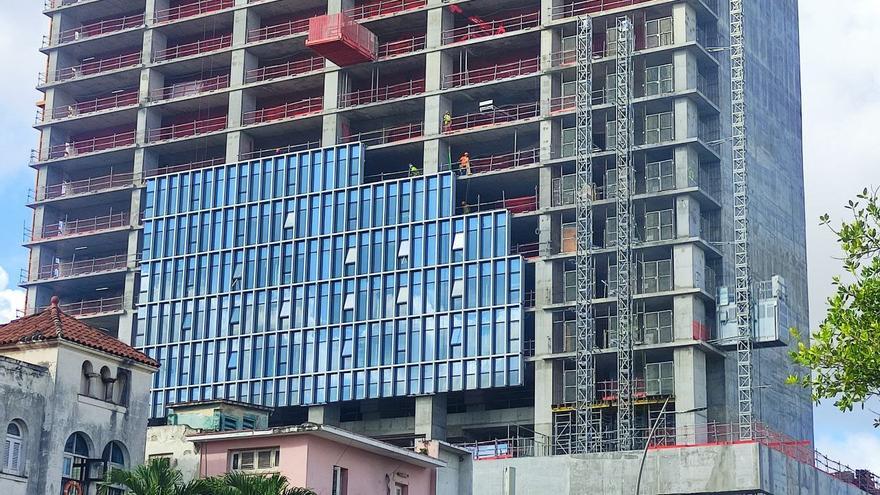
![]() 14medio, Havana, 8 June 2022 — Havanans have seen what will be the tallest building in Havana go up, at 23rd and K, the heart of El Vedado, in just a few months and without the usual propaganda by the Cuban authorities when it comes to an achievement.
14medio, Havana, 8 June 2022 — Havanans have seen what will be the tallest building in Havana go up, at 23rd and K, the heart of El Vedado, in just a few months and without the usual propaganda by the Cuban authorities when it comes to an achievement.
The construction, which is called the “López-Calleja tower” on the street because it is the work of the military conglomerate Gaesa — commanded by the general of that name who is the former son-in-law of Raúl Castro — was announced with great fanfare four years ago as a future 42 floor, 505-foot-high hotel, part of the ambitious plan to offer 100,000 rooms in Cuba by the year 2030, but it was soon covered with a veil of silence.
People did not understand the unbridled development of five-star accommodation in a country where more than half of the homes are in dire need of repair.
This Monday, for the first time since 2018, when they presented a model, the official press has pronounced on the mammoth work. It has done so only to defend that “quality control is rigorous and constant” in its construction, after several experts questioned it.
The controversy began with a text by the Cuban architect residing in Berlin Rafael Muñoz, who on his blog Malanga Blue expressed himself forcefully about the tower: “I am not going to talk now about everything we know, about disrespect for urban planning laws, about the use of the wrong materials, about the contracting of foreign projects to the detriment of local professionals, about the economic nonsense that it represents, if not literally of ’birthing’, since I have seen this photo today and as an architect, I have no choice but to address the dark points of this construction.” continue reading
The specialist referred to a photograph of the building in which the mesh with which it was covered could be seen and he recommended zooming in to analyze the surface of the “recently poured” concrete: “Let’s look at that large patch on the beam in the third level. Let us then contemplate the succession of dark points that contrast on the lighter concrete on the closest wall in the photo. No, that is not a work of art but ’cockroaches’, places which, due to lack of vibration, the concrete mass did not settle and there were holes in its surface. The repair is expensive and requires special materials and resins if it is done well. The bad thing about ‘cockroaches’ is that you can only ’cover’ the holes that are visible, especially the surface. But what about the ones you can’t see? The ones left in the middle of the concrete?”
Muñoz also criticized “the edges and joints between elements,” whose color, again different, betrays “a second pouring of concrete to correct the failure of the first.” This, the architect clarified, “is not a problem in itself, if it is done well,” and he said: “I take it for granted that they have done the right thing, sealed the joint and continued to build. The specialist referred to an photograph of the building in which the mesh with which it was covered could be seen and he recommended zooming in to analyze the surface of the “recently poured” concrete.
“Let’s look at that large patch on the beam in the third level. Let us then contemplate the succession of dark points that contrast on the lighter concrete on the closest wall in the photo. No, that is not a work of art but ’cockroaches’, places which, due to lack of vibration, the concrete mass did not settle and there were holes in its surface. The repair is expensive and requires special materials and resins if it is done well. The bad thing about ‘cockroaches’ is that you can only ’cover’ the holes that are visible, especially the surface. But what about the ones you can’t see? The ones left in the middle of the concrete?” . In any case, at first glance the quality of surface finish of that blank wall is not good. Light and shadow on a vertical wall is always a sign that something didn’t go as planned.”
Lastly, the architect drew attention to the lack of “protections and signs” for the workers. “Why is a mesh only placed on the upper floors and not throughout the building as it should be and is provided for Cuban regulations?” Muñoz wondered. “Do you have to wait for someone to fall into the void to mourn the loss, blame the blockade and promise an investigation of something that is visible to the naked eye before it happens?”
The expert went further, asking: “What do you think would happen if a brick, a wheelbarrow, or a wagon accidentally or intentionally detaches and falls from the 20th floor onto 23rd Street on top of a bus? Or if soon, as a result of the rains these days, a gale forms and cement and materials begin to fly over the city?” In addition he referred to the explosion of the Saratoga Hotel, a month ago, and the accident that cost the life of a customer in 2020 at the Meliá Habana hotel, when the elevator he was in fell: “When a hotel fails, it is a consequence of the sum of many negligences, of bad work, of ignoring rules, procedures and laws.”
Muñoz also asserted that none of the materials used “are high-tech”: “All of them are within the reach of a work of this caliber in Cuba. Bear in mind that a 5-star hotel with 42 stories plus basements is being built whose value without much effort, it will exceed 55 or 60 million dollars. Ensuring that accidents do not occur does not exceed 1% of the cost of the work, but it can insure lives or damages to third parties. It is also showing respect for the life of others and the property of others. But if that were not enough, it would at least to comply with Cuban laws.”
The text, replicated by independent media, provoked a reaction from Alejandro Manuel Silva González, who in a Facebook post identified himself as “part of the team of engineers that has prepared the structure project and that for more than two years” has reviewed the project at least once a week.

This post is the one that Granma glossed over this Tuesday in its article about the hotel it calls “K23.” The Communist Party newspaper reproduces the declarations of Silva González, who assured that “the concrete poured in the work exceeds the resistance of 50 MPa and the batches used are endorsed by national laboratories and recognized international institutions.”
The engineer said that “the difference in color between the elements is due to the application of various formulas and additives, all approved and validated” and that the safety standards established by law are followed in the work. All this, accompanied by photos, were also reproduced by the official newspaper.
Those photos, responded Rafael Muñoz in a new entry in Malanga Blue, “have only reaffirmed my opinion,” although he clarified: “Go ahead, I have opposed alarmist comments that affirm that the building will fall. It will not. I have never doubted, I have not even mentioned the specified resistance, the use of additives in the concrete, or the complexity of the work.” His analysis, he detailed, referred to “the quality of the finishes of that concrete,” and the “observance of the regulations of works in Cuba in terms of safety.”
In their Facebook, other colleagues added their point of view. For example, Ernesto Herrera Quintas, who celebrates Muñoz’s “excellent analysis” and criticizes “the counterpart published by the engineer,” which “generated more doubts because he missed many important points.”
Maurys Alfonso Risco expressed that he was concerned about “other things”: “The effectiveness of a curtain wall in a country where there is no tradition and preventive maintenance is zero. I think of the unnecessary veneer elements that surround it and I think of Amelia’s mural, right in front. In my case I have always shot from the aesthetic point of view but that doesn’t mean I ignore many technical concerns at the same time,” and he noted that he is an expert.
Muñoz himself responded to this: “Now that’s another edge, which I didn’t want to touch. There’s nowhere to take that building. Either because it’s ugly, because of the use of inappropriate materials, because of hiring foreigners instead of nationals.”
In addition to Granma, with its brief gloss on the engineer Silva González, it replied to Muñoz, this Tuesday, on the television program Con Filo, aimed at discrediting not only opponents, activists and independent journalists, but also any expert who opposes the Cuban regime. Without offering more arguments, an attempt is made to disqualify the architect as experts “in the teleworking modality.”
Regardless of any discussion, the work that at the end of 2020 was still barely a hole — one of those that abound so much in bombed cities — has already changed the recognizable profile from the Malecón, with the National Hotel, the Habana Libre and the Focsa, all built before 1959.
____________
COLLABORATE WITH OUR WORK: The 14ymedio team is committed to practicing serious journalism that reflects Cuba’s reality in all its depth. Thank you for joining us on this long journey. We invite you to continue supporting us by becoming a member of 14ymedio now. Together we can continue transforming journalism in Cuba.


